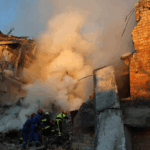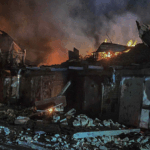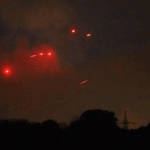Two years into the Russia-Ukraine crisis, the U.S. has emerged as Kyiv’s lifeline, pouring over $110 billion in military and financial aid into the conflict. But is this support a shield for democracy—or a spark prolonging the war? Let’s unpack the geopolitical chessboard. 🛡️⚔️
Sticker Shock Alert 🚨
Since 2014, Washington has armed Ukraine with everything from Stinger missiles to advanced HIMARS rocket launchers, escalating to NATO-grade systems like the Patriot missile defense in 2023. The Kiel Institute reports $44.8 billion of this aid is purely military—think of it as a digital-age game of Risk, but with real-world stakes.
The ‘Invisible Army’ Effect 👥🌐
While Ukraine battles on the frontlines, the U.S. and allies like Japan and South Korea play quarterback: slicing sanctions on Russia, isolating Moscow diplomatically, and keeping Zelenskyy’s government funded. As researcher Zhang Hong notes, this backing lets Kyiv punch above its weight—but at the cost of global stability.
Peace Talks Derailed? 🕊️❌
In 2022, Ukraine and Russia allegedly nearly froze the conflict during Türkiye-mediated talks. But leaked reports suggest then-UK PM Boris Johnson pushed Kyiv to keep fighting. Critics argue such moves prioritize weakening Russia over ending the war—a risky play for a world already battling inflation and supply-chain chaos.
Global Order at Stake 🌐⚖️
While the U.S. frames its aid as defending democracy, the conflict has frayed multilateral ties. EU energy deals with Russia collapsed, and developing nations bear the brunt of disrupted grain exports. “The crisis reminds us there’s no plan B if multilateralism fails,” warns Zhang.
Reference(s):
News analysis: How U.S. assistance affects Russia-Ukraine crisis
cgtn.com





